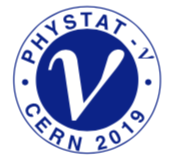Speaker
Description
I will explain the role of reactor anti-neutrino data in the global analyses performed for standard neutrino oscillations (within the NuFit collaboration) and in scenarios involving sterile neutrinos.
The modern medium baseline reactor experiments, L~Km, can determine the neutrino mixing angle \theta_{13} and give a complementary determination to the long baseline experiments of the atmospheric mass splitting. Their synergies are relevant to the determination of this mass splitting and the \theta_{23} octant.
The modern short baseline reactor experiments, L~ 10m, are crucial for the study of the reactor anti-neutrino anomaly in terms of sterile oscillations, since their analysis is based on ratios of relative measured reactor spectra, as well as the modern medium baseline ones, what makes the analyses independent of reactor anit-neutrino flux predictions.
I will focus on the technical details of the analysis: which data do we take, how do we analyse them, which systematic errors do we assume, and how do we implement them. Furthermore I will discuss how do we combine many different experiments into a global analysis.
